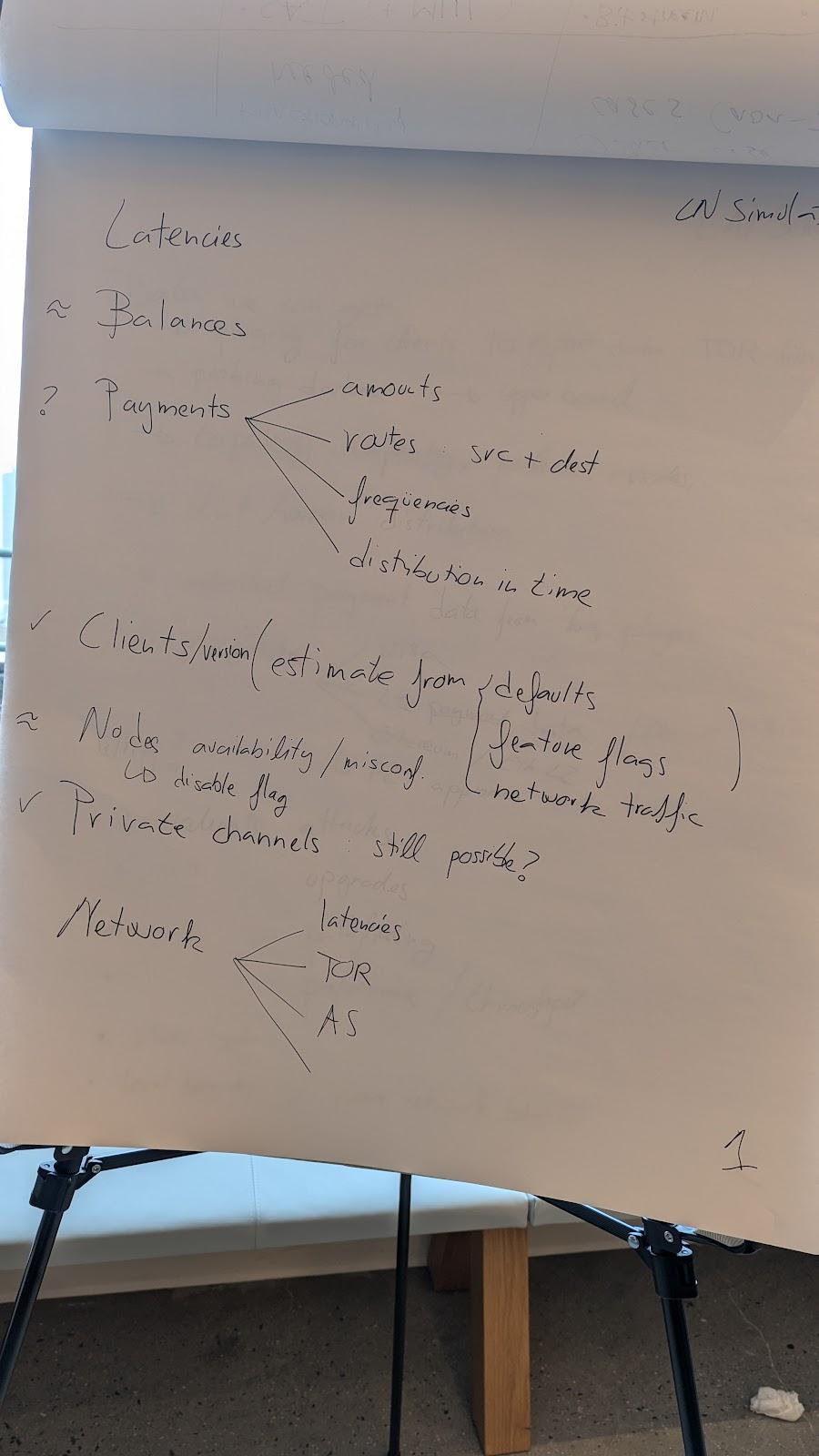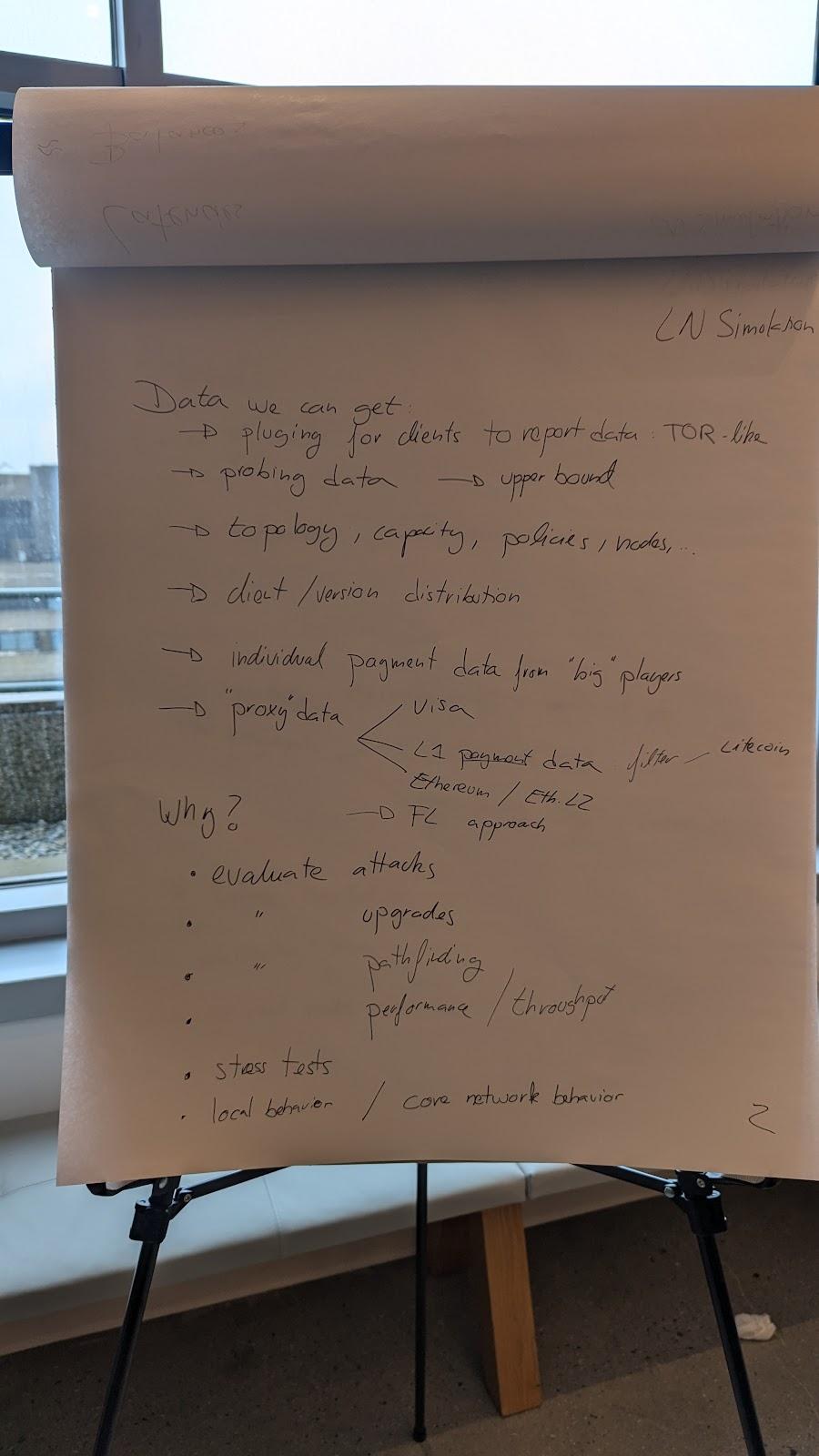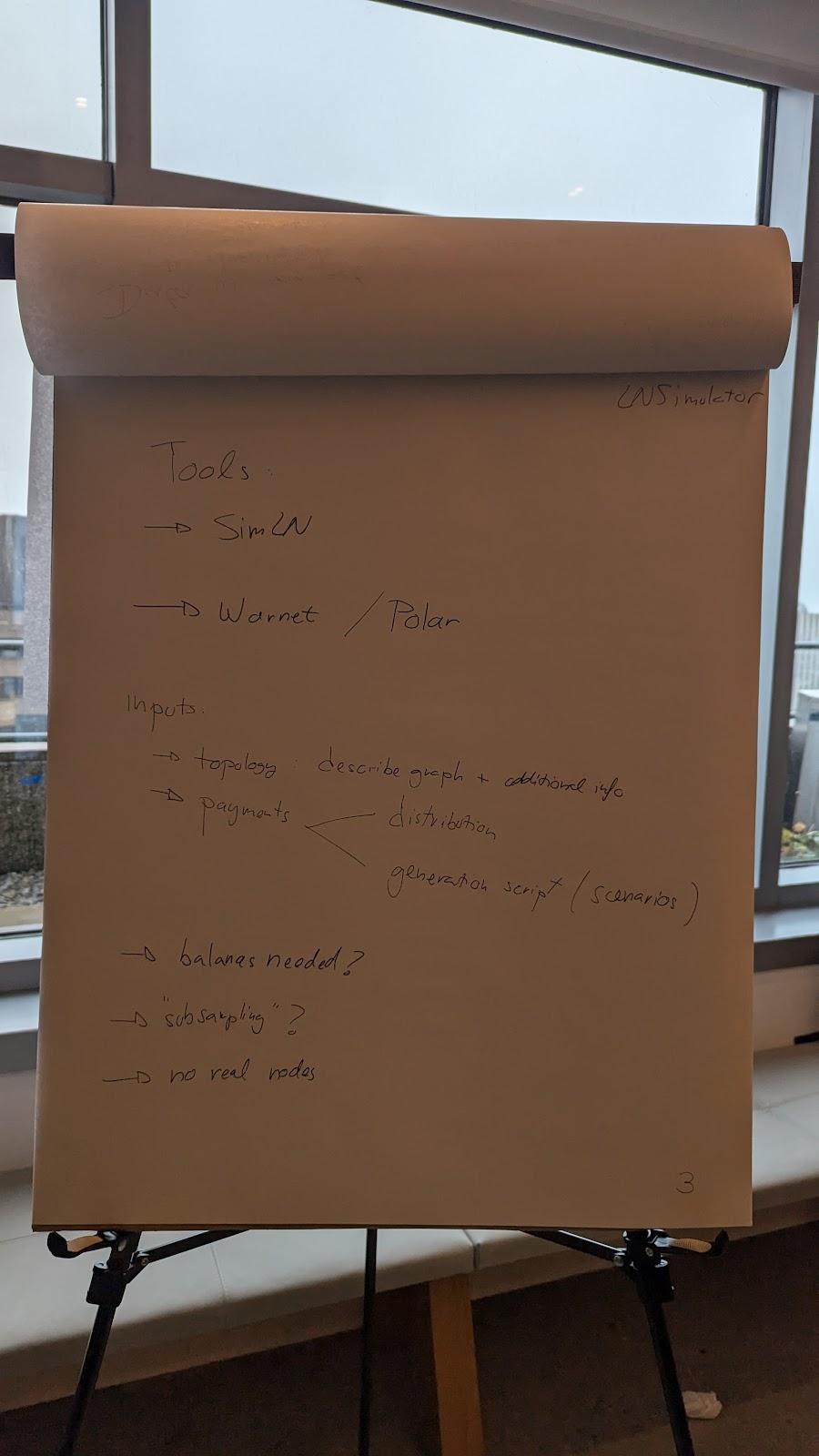Date
21 November, 2024
Topics
Not available
Speakers
Not available
Transcript by
Ad-hoc Simulations for Individuals: How can we develop a framework that better suits everyone's needs? Each paper uses its own simulations. It would be better to have a unified solution that is broadly applicable.
The research papers differ significantly in what they measure, leading to the use of custom simulations (e.g., pathfinding, routing, and other models). While different use cases might justify this variation, we still need a unified strategy.
Unified Simulations: It should be possible to simulate these scenarios more systematically. For instance, Warnet can provide a uniform simulation framework. It shares similarities with Polar but focuses more on specific lightning network simulations, while tools like Simln generate payment scenarios for the Lightning Network.
Data Availability and Usage:
Some nodes share limited public data.
Simulation challenges include topology, capacity, policies, and node availability.
Node availability can be inferred when peers mark all channels as disabled via gossiping.
Using probabilistic methods may help estimate availability.
Balance Probing and Validation:
Reliable balance data is often unavailable, complicating validation.
While balance probing can help determine balance distribution, River might provide supplementary data.
Assuming one direction channel balance often improves routing but may not reflect reality.
Privacy and Model Use Cases:
Models can evaluate privacy, routing, and new feature implementations.
Claims that Lightning can process a million payments per second are often exaggerated.
Accurate throughput measurement is essential to assess network changes.
Overfitting Risks and Data Handling:
Avoid overfitting by using generic data or randomized datasets where specific data is unavailable.
Use mutations of current data to validate results.
Stress Testing:
Stress testing helps evaluate network resilience under adverse conditions.
Researchers should adopt a holistic perspective, analyzing the network as a whole.
Cluster data by graph neighborhoods. If data is limited for certain neighborhoods, validate simulations within those and acknowledge uncertainties elsewhere.
Use Warnet to spin up Lightning nodes and Simln to generate payments.
Explore attack scenarios (e.g., AS-level attacks) using these tools to understand vulnerabilities.
Node Categorization:
Accurate categorization of nodes is difficult as nodes don't self-identify their roles.
Collaboration with companies like CashApp may help classify nodes.
Payment Flows:
Desired Data:
From sources like CashApp, River, and personal nodes.
Publicly available data.
Feature Requests for Simln:
JSON support for network topology.
Node classification based on inbound payments and balance distribution.
Scaling functionality for large networks.
Dynamic topology generation and payment configurations.
Integration Options:
Simln should be able work independently or with Warnet.
While Simln handles payment simulations, dynamic topology generation scripts can complement it in a Warnet scenario.



Community-maintained archive to unlocking knowledge from technical bitcoin transcripts




